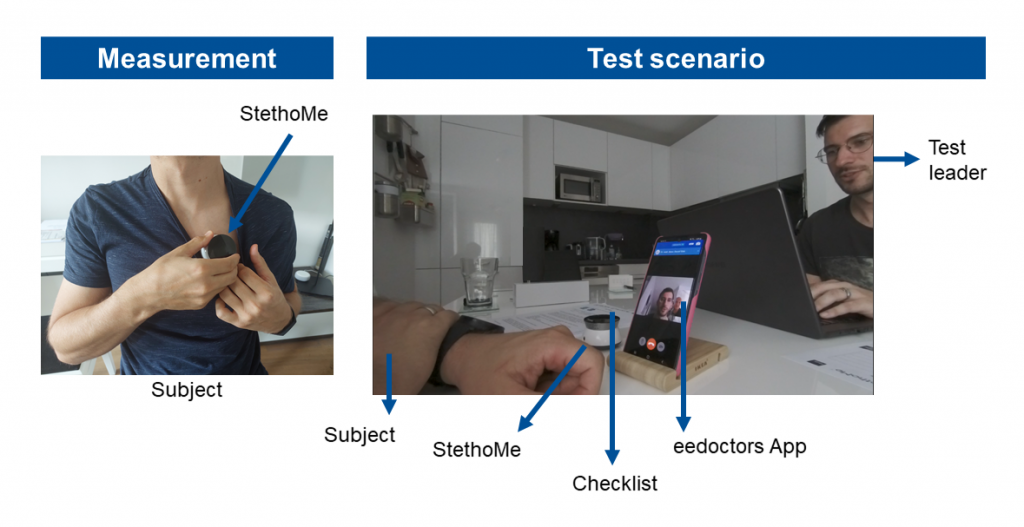Usability test of a teleconsultation platform with a simulated examination and a digital stethoscope
Aim and Research Question(s)
The aim of this work is to examine the usability of a teleconsultation platform eedoctors.com through a usability test in conjunction with a digital stethoscope and to determine the user acceptance and user needs of teleconsultation and the use of medical devices in this context. RQ1: Which functional and technical requirements can be found in a usability test of users of a teleconsultation platform in a simulated examination scenario "patient with cough" using a digital stethoscope? RQ2: How well can user in a usability test of a teleconsultation platform perform the tasks set in a simulated examination scenario "patient with cough" using a digital stethoscope, and what improvements can be identified?
Background
It has been shown that many outpatient contacts in different settings can also be managed remotely very effectively and without disadvantages for the patient - especially with non-acute complaints. The necessary infrastructure is already there in the population and the will to use video consultation of the health care providers and patients was there [1]. Smart medical devices like a digital stethoscope offer an opportunity to increase the proportion of diseases that can be diagnosed or treated “online”.
Methods
A usability test was carried out with 15 people in which the test subjects first had to perform a measurement with a digital stethoscope (StethoMe) and then have a simulated teleconsultation with a doctor (test leader). A simulated "cough" was discussed as an treatment scenario (Figure 1). The steps, the autonomous performance, time per task and clicking behaviour were recorded and documented. In addition, the subjects were subsequently given the standardized questionnaire "Post Study System Usability Questionnaire (PSSUQ)" and a semi-structured interview was conducted on the topics of "teleconsultation" and "medical devices".
 Figure 1: Measurement and test scenario
Figure 1: Measurement and test scenario
Results and Discussion
Almost all tasks in the usability test could be performed independently (93.33%) or with the help of a self-created user manual (6.67%) (Figure 2). The subjects rated the performance of the tasks as very easy or easy. The results of the PSSUQ yielded an overall score of 1.9 ± 1.3, which also indicates an above-average usability of the teleconsultation app and digital stethoscope. The interview helped to define the needs of the test persons as well as technical and functional requirements.
 Figure 2: Results of all subjects of the task completion rate
Figure 2: Results of all subjects of the task completion rate
Conclusion
While the acceptance and will to use such solutions and the technical prerequisites for the use of teleconsultations and medical devices already exist, regular use will not gain momentum in Austria without embedding these developments in the Austrian healthcare system.
References
[1] Wilbacher, I., & Vrazic, H. (2020). EBM_HTA Recherche—Telekonsultation. Dachverband der österreichischen Sozialversicherungsträger. https://www.sozialversicherung.at/cdscontent/load?contentid=10008.739121&version=1600689109
